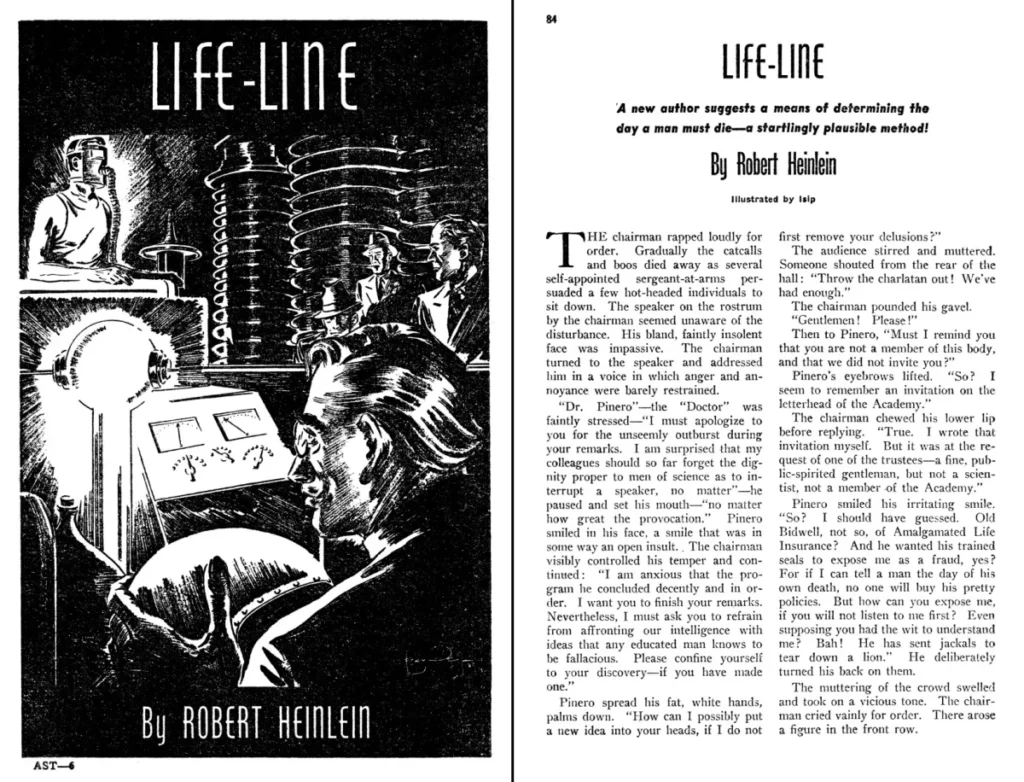
It is not clear how Heinlein got from this germ to the story he eventually did write up as his first story, “LifeLine.” Switching it from pure fantasy to science fiction may have suggested the pulp gadget-story format, which is typically about the inventor and his invention.
Heinlein began in a way that would become characteristic for him—with irony: his inventor was not a mad scientist but the only truly sane man in the story, a rational man who faces facts squarely and without wishful thinking, fairly obviously a model of how Heinlein—as a rational man—hoped he would face that dreadful knowledge, resolutely: make time to enjoy the best things life had to offer him in his remaining time and leave Leslyn provided for, possibly by taking out a big insurance policy—any insurance company would scream bloody murder if it was discovered that he was using some kind of arcane knowledge.
The elements of a science-fiction story—with a fantasy “twist” at the end—took shape, and this was a characteristic, also, of Heinlein’s approach to fiction: he was never to be comfortable with formula, and many of his stories challenge the boundaries of science fiction. Equally characteristically, Heinlein chose a pun for his title (perhaps because he started the typing on April 1, 1939—April Fools’ Day): the lifeline is a crease in the palm that fortune-tellers use to tell the length of a person’s life. It is also what sailors call the rope they throw to a man overboard, to save his life. Heinlein gathered up enough paper—he was still using mimeographed precinct-worker instructions from the election in 1938—and began typing.
The scenes fell into place like clockwork. He got through a thousand words that first day and more than two thousand the next. Two days later, he was done with the story. If Leslyn’s sense for story structure had been honed in the movies, she might have been surprised at how Robert had used the bits she had suggested. This wasn’t a conventional commercial plot, with a single, straight through story arc. He had twined three story lines together—mature stories, too, not pulp kids’ stuff. Even in first draft, this was a professional-quality job. Once he retyped it to get a clean manuscript, it would be ready to send out. This spate of writing had been prompted by a piece in one of the science-fiction pulps, but the “prize” for Thrilling Wonder’s “contest” was less than the prevailing pulp story rates of a penny a word. (The most popular writers could earn a lot more, but there was also a bottom rung of the pulp market that was paid a lot less—half a cent a word or less. Thrilling Wonder Stories was on that bottom rung.) Instead, Heinlein sent it to the only editor who had both a fantasy magazine and a science-fiction magazine, John Campbell at Astounding Science-Fiction and Unknown.



